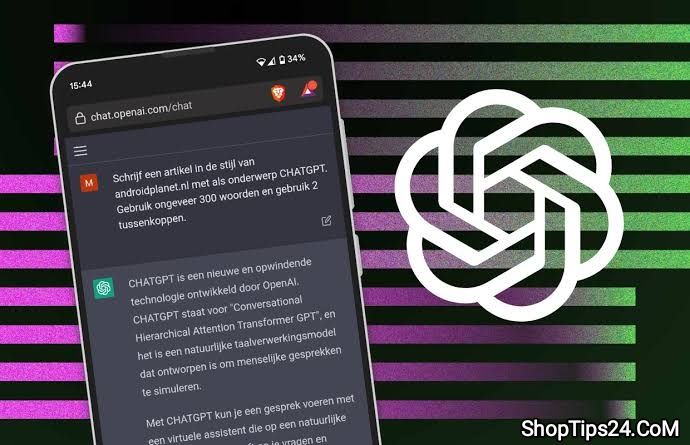ChatGPT is a conversational language model developed by OpenAI, which uses the latest advances in artificial intelligence to generate human-like responses to user input. It is based on the GPT (Generative Pre-trained Transformer) architecture and has been trained on a large corpus of text data to produce text that is contextually relevant and coherent.
What is ChatGPT?
ChatGPT is an AI-powered language model developed by OpenAI. It is a variant of the Generative Pre-trained Transformer (GPT) model and is designed to generate human-like text.
ChatGPT uses deep learning and natural language processing (NLP) to generate text that is coherent, contextually appropriate, and often mimics human writing style. It can be fine-tuned for a variety of tasks, such as chatbots, language translation, content generation, virtual assistants, and sentiment analysis.
Since its release, ChatGPT has become one of the most widely used language models, and its capabilities and accuracy continue to improve as OpenAI continues to refine and improve the model.
How ChatGPT Works
ChatGPT works on the transformer architecture and uses deep learning to generate human-like responses to a given prompt or input. The model is trained on a large corpus of text data, allowing it to generate responses based on patterns and relationships it has learned from that data. When given a prompt, ChatGPT uses this training to generate a continuation of the text that is most likely to be appropriate given the input.
Applications of ChatGPT
Some common applications of ChatGPT include:
- Chatbots: used to automate customer service and support.
- Language Translation: translating text from one language to another.
- Content generation: generating articles, summaries, and other written materials.
- Question Answering: answering questions based on a given context.
- Virtual assistants: performing tasks and answering questions for users.
- Sentiment analysis: determining the emotional tone of a piece of text.
Chatbots:
Chatbots: used to automate customer service and support. Chatbots powered by ChatGPT or similar language models are commonly used for automating customer service and support. These chatbots are able to answer questions, provide information, and assist customers with a variety of tasks, such as resetting passwords or checking order status.
By using natural language processing (NLP) and deep learning, ChatGPT-powered chatbots can understand and generate human-like responses to customer inquiries, improving the overall customer experience and reducing the workload for human support teams.
Language Translation
Language Translation: translating text from one language to another.ChatGPT or similar language models can be used for language translation. The models can be fine-tuned on parallel texts in different languages to learn the mapping between the languages, allowing them to translate between the languages.
Language translation using deep learning models has improved significantly in recent years, and models like ChatGPT can now produce high-quality translations for many languages. However, it is important to note that these models still have limitations and may produce errors, particularly for rare or highly nuanced language. Human review and correction may still be necessary for critical or sensitive applications.
Content generation
Content generation: generating articles, summaries, and other written materials. ChatGPT and similar language models can be used for content generation, including generating articles, summaries, and other written materials. The models can generate text that is coherent, contextually appropriate, and often mimics human writing style.
This technology has a wide range of applications, from content creation for websites and marketing materials, to summarizing and synthesizing large volumes of information. However, it is important to note that the generated content may still require review and editing by a human, as it may contain inaccuracies, errors, or inconsistencies.
It’s also worth mentioning that using generated content can raise ethical and legal concerns, such as plagiarism and copyright infringement, so it’s important to use the technology responsibly and with consideration for these issues.
Virtual assistants
Virtual assistants: performing tasks and answering questions for users. ChatGPT or similar language models can be used as virtual assistants, performing tasks and answering questions for users. These models can be integrated into voice assistants like Amazon Alexa or Google Home, or into chat-based interfaces like Facebook Messenger or WhatsApp.
Virtual assistants powered by deep learning models like ChatGPT are able to understand and generate human-like responses to a wide range of queries, from answering factual questions to performing more complex tasks like scheduling appointments or ordering products.
By leveraging NLP and deep learning, these virtual assistants can provide a more natural and intuitive interface for users, improving the overall user experience. However, it’s important to note that the performance of these models may still have limitations, particularly for more complex tasks or queries, and human oversight may be necessary in some cases.
Sentiment analysis
Sentiment analysis: determining the emotional tone of a piece of text. ChatGPT or similar language models can be used for sentiment analysis, which involves determining the emotional tone of a piece of text, such as whether it is positive, negative, or neutral.
These models can be trained on large amounts of labeled text data, allowing them to learn patterns and relationships between words, phrases, and sentiment. When given a new piece of text, the models can then predict the sentiment of that text based on what it has learned.
Sentiment analysis using deep learning models has improved significantly in recent years, and models like ChatGPT can now provide high-accuracy sentiment predictions for a wide range of text. However, it’s important to note that these models may still have limitations, particularly for more nuanced or sophisticated forms of sentiment, and human review and correction may still be necessary for critical or sensitive applications.
